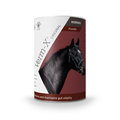If you have a pet you will probably have had an experience with worms first-hand, finding them in faeces or even vomit! They vary in size from 1mm long nematode worms to 2m long tapeworms. In fact, there are nearly 300,000 species of parasitic worm in the world. They can cause anything from mild weight loss in your cat, to colic in your horse.
Their presence and the problems they cause can be very frustrating, but don’t worry, below we have a guide on the best advice for ensuring your pet is covered and protected. This guide is quite comprehensive, so we recommend scrolling down to the animal(s) you have and reading the section relevant to you.
________________________________________
Horses
Horses are commonly exposed to worms through grazing. We used to worm horses routinely and just based on season, but unfortunately there is a growing level of wormer resistance in the horse population. Therefore best advice in most cases is to form a yearly plan and test for worms before just treating anyway. If you treat a horse that doesn’t need it, then actually you predispose your horse to resistant worms that will be very hard to kill in the future and can cause major problems.
Read our up-to-date guide on horse worming, which includes the seasons to treat, and the chemical to treat with.
________________________________________
Puppies/kittens <12 weeks old
Pups/kittens are easily infected with worms through their mother’s milk, something which is made even easier due to their still-developing immune system.
Worming should be done at 2, 5, 8, 10 and 12 weeks old. From this point they can be treated as an adult (see guide for Cat or Dog), but ideally they should be wormed monthly until 6 months old.
Liquid wormers containing Fenbendazole can be used from birth:
Once weaned you can switch onto tablets/satchets/spot-ons:
________________________________________
Cats > 12 weeks old
Cats find worms by hunting/scavenging outside, and raw meat is the main cause. For the average cat, worming every 3 months is advised. If your cat is a good hunter, then monthly worming is recommended. For an indoor only cat you could reduce this to only every 6-12 months.
Wormers containing Praziquantel, Pyrantel and Febantel work well. They come in tablet or spot-on form, but spot-ons are usually the easiest to apply:
________________________________________
Dogs > 12 weeks old
Dogs pick worms up from scavenging outside, eating other dog's poo and munching on slugs/snails! Most roundworms and tapeworms only need to be covered every 3 months in the average dog, however lungworm must be protected against monthly in dogs. Unfortunately lungworm coverage can only be done by prescription wormers. Covering lungworm is strongly recommended, whilst still being uncommon it can be deadly and prevention is always better than treatment.
Non prescription worming (no lungworm coverage)
Any of the following, every 3 months, cover both roundworms and tapeworms:
Wormers containing Praziquantel, Pyrantel and Febantel:
Wormers containing moxidectin also cover roundworms including lungworm.
These must be used alongside a tapeworm preventative every 3 months, such as those containing Praziquantel.
If you have any questions, don't hesitate to get in touch with our customer support team at [email protected] or speak to one of our SQPs who will be able to asist you.
Written by: Dr. Nick Garside BVetMed MRCVS





